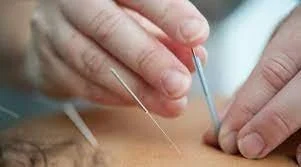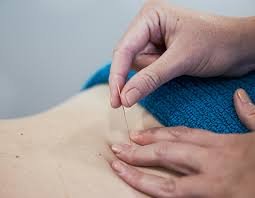Dry Needling
Dry needling is a technique in which a fine needle is used to penetrate the skin, subcutaneous tissues, and muscle, with the intent to mechanically disrupt tissue. Dry needling has become more popular in recent years, particularly amongst the athletic population.
One of the first questions people ask is ‘What is the difference between dry needling and acupuncture?’ There are a few similarities – the needles used are often the same and a lot of the areas needled are similar. The philosophies are different though. Acupuncture comes from a traditional Chinese medicine philosophy that focuses on energy, meridians and chi. Based on this philosophy when you get acupuncture they will often needle areas away from the site of the pain. Dry needling has a much more targeted approach and focuses on treating the muscles that are contributing to the pain or dysfunction.
The needles used are quite small. The ones that we use at Excelsior range from 0.16mm – 0.25mm thick and 15mm – 50mm long. They are much smaller than a needle used to draw blood or give a vaccination. One of the main oppositions to dry needling is clients who have a fear of needles. Personally if a client has a fear of needles I won’t proceed with using dry needling. The fear of needles and anxiety that is produced will normally outweigh the benefits of dry needling. We have plenty of other techniques to help you achieve your goals.
As dry needling involves penetrating the skin there are more risks involved than other manual therapy techniques. These include bleeding, bruising and infection. The most serious risk of dry needling is pneumothorax – puncturing the pleura surrounding the lungs that can cause the lungs to collapse. Pneumothorax is only a risk when needling around the thoracic region. As serious as pneumothorax is the risk is very low and with proper needling technique dry needling is very safe.
The benefits of dry needling are that we can be very specific with our treatment and target the area of the muscle that is causing pain or dysfunction. The ability to insert the needle into the muscle means we can treat more effectively rather than trying to treat through the skin with techniques like massage. Dry needling is also a very quick and effective treatment. Some therapists will stimulate the needles with twisting or pecking, however, there is no strong evidence that this improves the treatment and in my experience clients will normally experience more soreness after the treatment if the needles are stimulated.
Dry needling can be used for all muscular complaints. At Excelsior we regularly use dry needling to treat lower back pain and lower limb pain, especially needling through the glutes, hamstrings and calves.
Like most manual therapy techniques dry needling affects the nervous system more than the muscles itself. Therefore, it can provide short term relief but that relief normally does not last a long time. The way to make the most of the short term relief and convert it into long term results is to use the reduction of pain and increased movement that dry needling can provide to exercise and strengthen the muscles required to stabilise the body and allow it to move properly and pain free.
If you would like to experience dry needling to help you reduce your pain or increase your movement than book an appointment and come in and see us.


